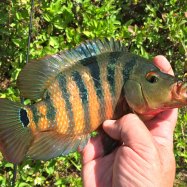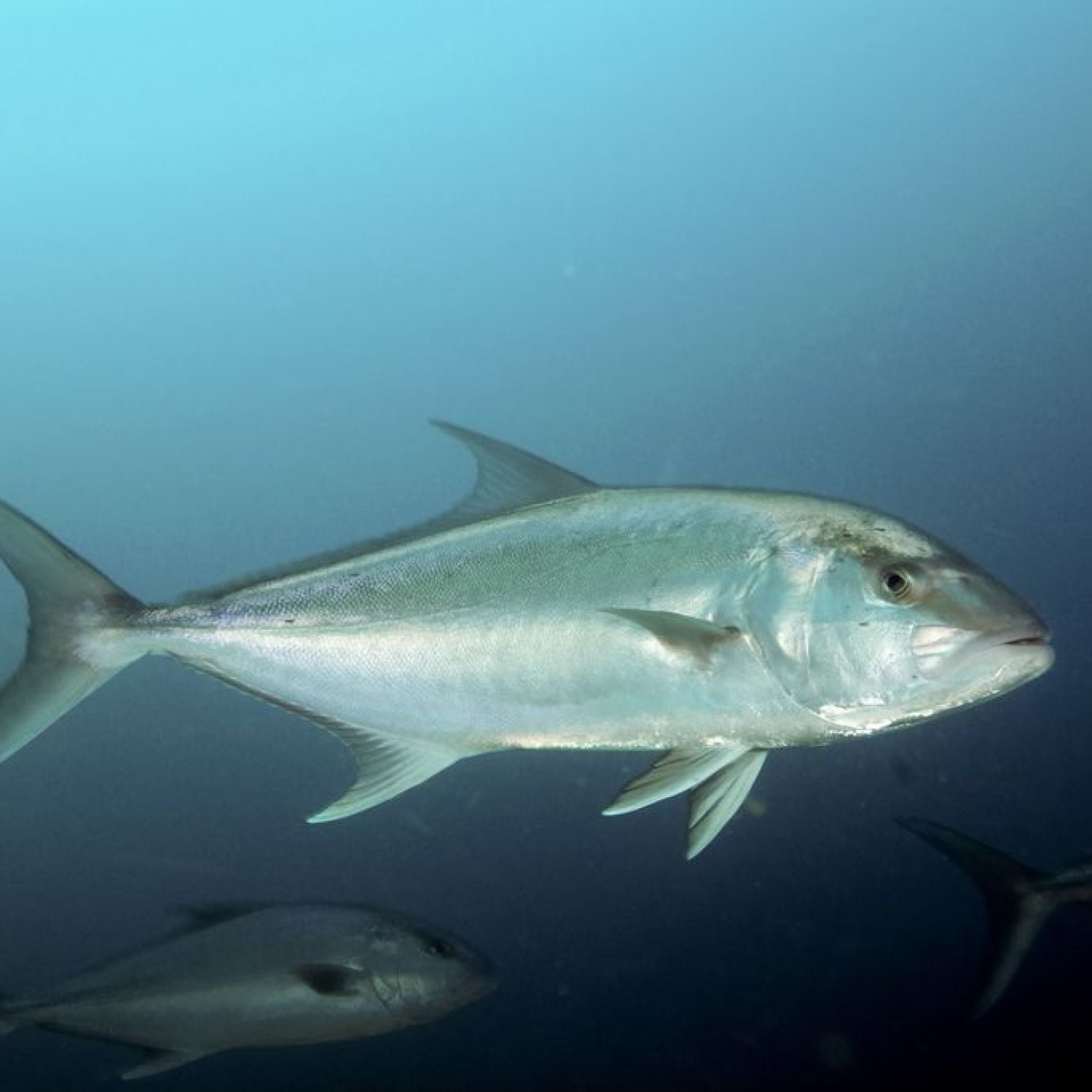
Amberjack
Up to 150 cm
Discover the fascinating world of animals with the Amberjack! These impressive creatures, belonging to the Carangidae family, can grow up to 150 cm in length and are commonly found in the ocean. With their streamlined and elongated body shape, they are well-adapted for swift swimming to catch their prey. Keep an eye out for the Amberjack on your next ocean adventure! #animalsocean #Amberjack #Carangidae
Animal Details Summary:
Common Name: Amberjack
Kingdom: Animalia
Habitat: Saltwater
The Majestic Amberjack: A Master of the Ocean
The ocean, with its vast depths and endless expanse, is home to a plethora of stunning and unique creatures. One such creature that captures the imagination of onlookers is the Amberjack, also known by its scientific name, Seriola dumerili. While its name might not be as well-known as some of its marine counterparts, this fish stands out for its immense size, impressive speed, and incredible adaptability. In this article, we will take a deep dive into the world of the Amberjack, exploring its physical features, behavior, and impact on the marine ecosystem Amberjack.A Part of the Animal Kingdom
Before we delve into the world of Amberjacks, let us first establish its place in the animal kingdom. As with all living organisms, the Amberjack belongs to the Animalia kingdom, characterized by its multicellular and heterotrophic nature. It also falls under the phylum Chordata, which includes all animals with a dorsal nerve cord. The Amberjack also belongs to the class Actinopterygii, indicating that it is a bony fish with fins supported by thin bony rays. Now, let's take a closer look at this fascinating creature and discover what makes it stand out among its counterparts.A Common Name with a Wide Reach
The Amberjack, as its common name suggests, has a striking amber coloring, ranging from yellowish-brown to dark brown. Its back and sides are often a darker shade, while its belly is a lighter hue. However, its coloration may vary depending on the fish's age and its geographic location. For instance, those found in the Atlantic Ocean tend to have a more golden hue, while those in the Pacific Ocean are often darker in color Australian Shepherd Mix.An Imposing Body and Size
One of the most distinct features of the Amberjack is its imposing size. It has a streamlined and elongated body, giving it an aerodynamic shape that enables it to glide through the water with ease. The average size of an Amberjack ranges from 60 to 150 cm, with some even measuring up to 180 cm. Furthermore, it is not unusual for this fish to weigh up to 180 pounds, making it one of the largest game fish in the ocean.Exploring the Habitat of the Amberjack
If you want to catch a glimpse of the Amberjack, you will have to be near the ocean. As a saltwater fish, it is found in various marine environments, making it a highly adaptable species. Its ideal habitat includes rocky coastal areas, offshore reefs, and even shipwrecks. It is also common to see Amberjacks in open waters, where they cruise along the surface, making them a popular catch among deep-sea anglers.A Carnivore of the Sea
Like most predators in the ocean, Amberjacks are carnivorous, and their diet consists mainly of smaller fish, squid, and crustaceans. This feeding method is a testament to their dominance in the marine ecosystem, as they are considered to be apex predators. However, Amberjacks are not without their predators. Sharks, dolphins, and other larger fish often prey upon them, making it crucial for them to have a speedy and agile defense mechanism.Built for Speed and Agility
Amberjacks are known for their impressive speed and agility, thanks to their streamlined body shape and powerful muscles. Their sleek bodies not only allow them to glide through the water effortlessly, but they also make them difficult to catch for prey. Moreover, they are incredibly fast swimmers, with the ability to reach speeds of up to 50 miles per hour. This impressive speed also comes in handy when they are hunting, as they can quickly catch up to their prey and ambush them.A Worldwide Distribution
The Amberjack is a widespread species, with its geographic distribution spanning various areas of the world. They are found in the Mediterranean Sea, the Atlantic Ocean, the Pacific Ocean, and even in the Indian Ocean. However, despite its global presence, it is still unclear where exactly the Amberjack originated from. This mystery only adds to its allure and makes it a fascinating species to study and observe.A Significant Role in the Ecosystem
As apex predators, Amberjacks play a vital role in maintaining a balance in their marine ecosystem. By controlling the population of smaller fish and crustaceans, they help prevent a decline in certain species that could have a devastating effect on the ecosystem. Moreover, as a prey species for sharks and other large fish, they also contribute to the food chain, providing sustenance for other species in the ocean.The Impact of Human Activities
Despite their significant role in the marine ecosystem, Amberjacks are not immune to the impact of human activities. Overfishing is a significant threat to their population, as they are a popular catch for commercial and recreational purposes. Furthermore, pollution and plastic waste in the ocean have also been shown to harm marine life, including Amberjacks. It is crucial for humans to exercise responsible fishing practices and limit the adverse effects of plastic waste on the environment to ensure the survival of this magnificent species and other marine life.Conservation Efforts
Thankfully, efforts have already been made to conserve and protect the Amberjack. In some countries, there are regulations in place regarding the size, quantity, and method of fishing for this species. This helps prevent overfishing and allows their population to recover. Additionally, various organizations are working towards increasing awareness about the importance of marine conservation and the need to preserve endangered species such as the Amberjack.In Conclusion
The Amberjack is a remarkable fish that captures the imagination of anyone who has ever seen it. From its imposing size to its impressive speed, this species remains a true master of the ocean. Its adaptability, role in the ecosystem, and significant presence in various areas of the world make it a truly unique and fascinating creature. As we continue to learn and appreciate marine life, it is crucial to recognize the importance of preserving and protecting the Amberjack and other species like it for future generations to come.

Amberjack
Animal Details Amberjack - Scientific Name: Seriola dumerili
- Category: Animals A
- Scientific Name: Seriola dumerili
- Common Name: Amberjack
- Kingdom: Animalia
- Phylum: Chordata
- Class: Actinopterygii
- Order: Perciformes
- Family: Carangidae
- Habitat: Saltwater
- Feeding Method: Carnivore
- Geographical Distribution: Worldwide
- Country of Origin: Unknown
- Location: Ocean
- Animal Coloration: Yellowish-brown to dark brown
- Body Shape: Streamlined and elongated
- Length: Up to 150 cm
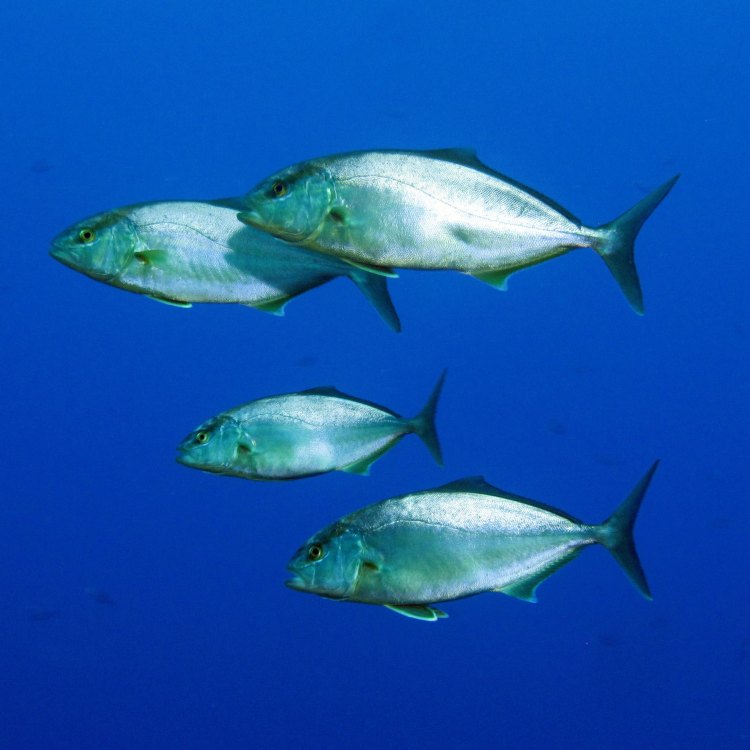
Amberjack
- Adult Size: Up to 40-60 kg
- Average Lifespan: 10-12 years
- Reproduction: Sexual
- Reproductive Behavior: Group spawning
- Sound or Call: Unknown
- Migration Pattern: Migratory
- Social Groups: Schools
- Behavior: Active and highly migratory
- Threats: Overfishing
- Conservation Status: Least Concern
- Impact on Ecosystem: Top predator
- Human Use: Commercial and recreational fishing
- Distinctive Features: Dark stripes on sides, strong jaws
- Interesting Facts: Amberjacks are known for their powerful and fast swimming abilities.
- Predator: Sharks, larger fish
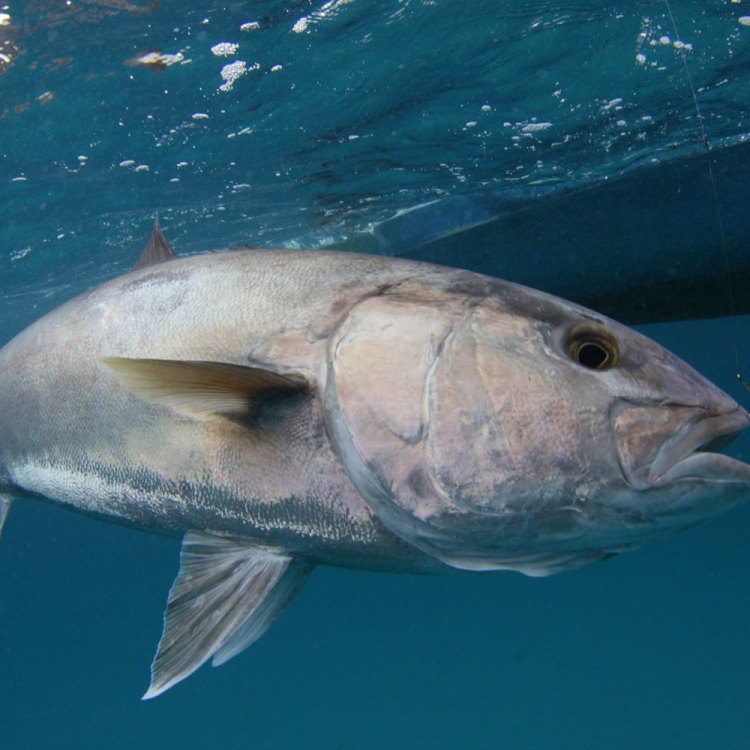
Seriola dumerili
The Mighty Amberjack: A Top Predator in the Ocean
The ocean is a vast and mysterious place, teeming with millions of species of marine life. And among these creatures, there is one that stands out in both appearance and behavior - the mighty Amberjack.Amberjacks are a type of fish found in the Atlantic, Pacific, and Indian oceans. They are known for their distinctive dark stripes on their sides and strong jaws PeaceOfAnimals.Com. These fish can grow up to an impressive 40-60 kg in size, making them one of the largest species in the jack family.
But what makes the Amberjack truly unique are its fascinating reproductive behavior, migratory patterns, and its crucial role in the ocean's ecosystem. Let's dive deeper and discover the intriguing features of this powerful and elusive fish.
The Breeding Behavior of Amberjacks
Like most fish, Amberjacks reproduce sexually. However, what sets them apart is their unique group spawning behavior. This means that instead of a single male and female coming together to spawn, multiple males and females gather in large groups to release their eggs and sperm simultaneously.This group spawning behavior is beneficial for the Amberjack species. It increases the chances of fertilization as there are more eggs and sperm released into the water, increasing the likelihood of successful reproduction.
Another interesting fact about Amberjack breeding is that they typically spawn in the open ocean, far away from any reefs or structures American Robin. This behavior is not only for their safety but also for the survival of their offspring as they have a better chance of survival in deep water.
Migratory Patterns of the Amberjack
Amberjacks are highly migratory fish, which means they move from one location to another in search of suitable habitats and food sources. This migratory behavior is necessary for their survival as they constantly require a diverse range of prey to maintain their large size and high energy levels.Amberjacks are known to migrate long distances, up to thousands of kilometers, in search of their preferred prey, which includes small fish, squid, and crustaceans. They also have the ability to adapt to different environments, making them resilient to changing ocean conditions.
Social Groups and Behavior of Amberjacks
Amberjacks are social fish and are often found in large schools, sometimes consisting of hundreds of individuals. These schools provide several advantages to the fish, such as increasing their chances of successful reproduction and providing protection against predators.These highly active fish have a voracious appetite and are constantly on the move, which helps them catch their prey. Their powerful and fast swimming abilities make them formidable hunters in the ocean and also allows them to escape from their predators.
The Threats Facing Amberjacks
Despite being powerful and resilient, Amberjacks are facing a significant threat - overfishing. Due to their large size and desirable taste, they are targeted by commercial and recreational fishing industries.Overfishing has led to a decline in Amberjack populations, and they are now classified as Least Concern on the International Union for Conservation of Nature (IUCN) Red List. While regulations and restrictions have been put in place to manage their populations, it is crucial to address the issue of overfishing to ensure the survival of this magnificent species.
The Mighty Impact of the Amberjack on the Ecosystem
Amberjacks play a crucial role in maintaining the balance of the ocean's ecosystem. As top predators, they help control the populations of smaller fish, which in turn prevents the overpopulation of their prey.Their migratory patterns also have a significant impact on other species. As they move from one location to another, they help distribute nutrients and essential materials, creating a healthier and more stable ecosystem.
If the population of Amberjacks continues to decline, it could have a cascading effect on the entire ecosystem, disrupting the balance and potentially leading to detrimental consequences.
Human Use of Amberjacks
Amberjacks have long been prized by humans for their delicious meat and challenging sport fishing. These fish are often caught by commercial fishermen and sold in markets or restaurants worldwide. They are also a popular target for recreational fishermen, offering an exhilarating experience due to their strength and size.However, it is essential to regulate and manage fishing activities to avoid overexploitation of this species. By doing so, we can ensure that future generations can also appreciate the remarkable qualities of the Amberjack.
In Conclusion
The Amberjack is a magnificent and unique fish that continues to fascinate scientists and ocean enthusiasts alike. Its powerful and fast swimming abilities, distinctive dark stripes, and unique breeding and migratory behaviors make it a formidable predator in the ocean.However, their populations are facing threats from overfishing, emphasizing the need for sustainable practices to protect the Amberjack and the delicate balance of the ocean's ecosystem. And as we continue to explore and learn more about this remarkable species, it is crucial to appreciate and conserve the mighty Amberjack for generations to come.
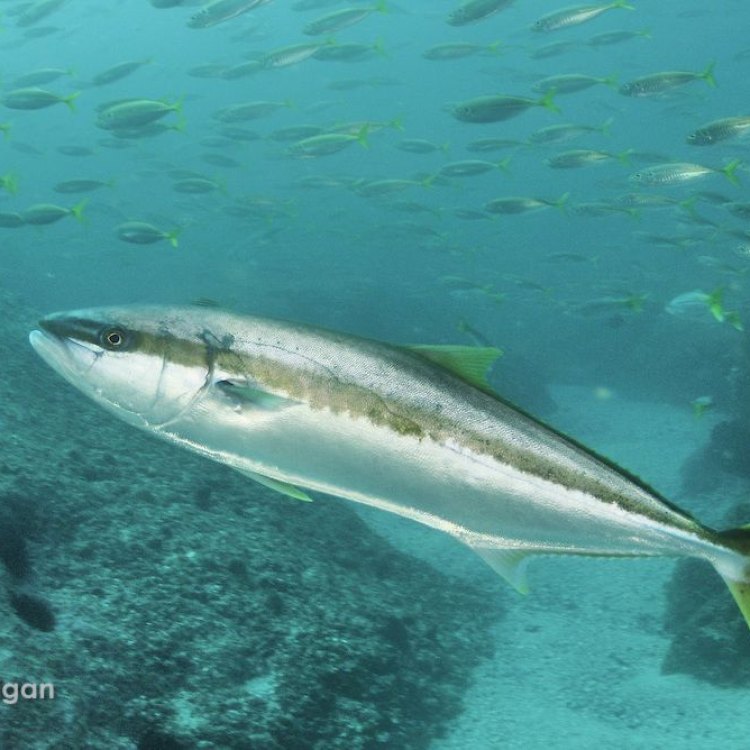
The Majestic Amberjack: A Master of the Ocean
Disclaimer: The content provided is for informational purposes only. We cannot guarantee the accuracy of the information on this page 100%. All information provided here may change without prior notice.




